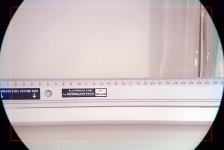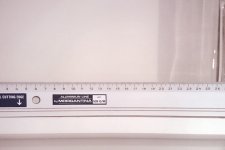Etiennef
Well-known member
I'm not really convinced that the comparison with a viewfinder is really applicable. The "scale" in the viewfinder does not necessarily correspond to the view in a scope.
If you take an example with an preview-screen instead of a viewfinder I think it becomes pretty apparent. In that case it would be like saying that a camera with a 3" screen has about twice the magnification of a camera with a 1,5" screen, even if the have exactly the same specs on all other parameters...
-
A good way to test this would of course be if someone with one of the previously mentioned cameras could take a picture of an object of know size (for example a standard CD-case) at say 10 meters. Then it would be easy to compare and see if we are in the correct ballpark or not...
If you take an example with an preview-screen instead of a viewfinder I think it becomes pretty apparent. In that case it would be like saying that a camera with a 3" screen has about twice the magnification of a camera with a 1,5" screen, even if the have exactly the same specs on all other parameters...
-
A good way to test this would of course be if someone with one of the previously mentioned cameras could take a picture of an object of know size (for example a standard CD-case) at say 10 meters. Then it would be easy to compare and see if we are in the correct ballpark or not...





